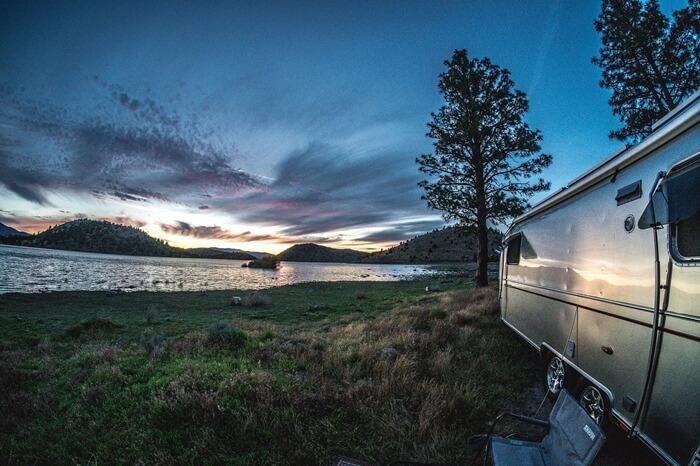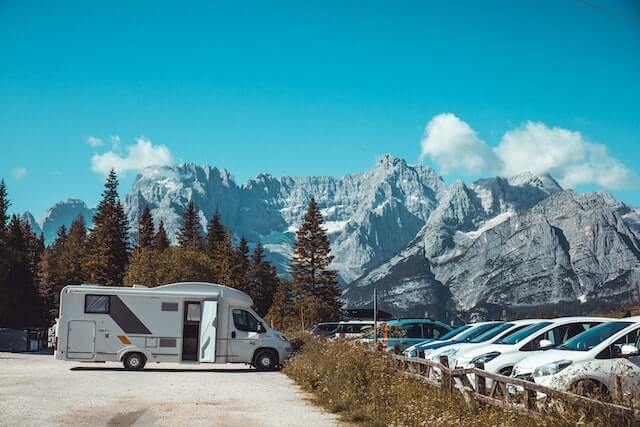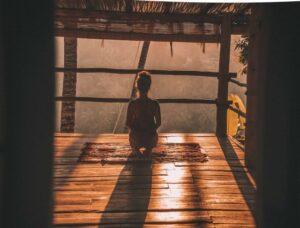Everyone essentially knows what it means to go camping, whether they participate in it or not. You pack up, travel into nature or a campground, pitch some type of shelter, and enjoy your time there. However, have you ever heard of “dry camping?”
At first you may wonder if the term has something to do with the weather of the location you’re going or even the amount of water you’ll be consuming while there. Dry camping is known by a few other names such as “off-grid” camping and “boondocking”.

The term essentially means that you provide all of your own amenities once you have arrived at your destination in your RV or travel vehicle; no fresh water, electricity, or sewer hookups are provided for you. Dry camping helps campers avoid potentially expensive campground charges and fees and allows you to camp for free.
How to Dry Camp Safely
Now that you know what dry camping is, it’s important to know how to participate in it both efficiently and safely. It’s essential to note that dry camping requires sacrificing some of the modern pleasures and necessities we normally have immediately available to us constantly.
However, the experience is worth it if you’re trying to maintain a more natural, primitive, way of experiencing the environment around you. In order to safely dry camp there are a couple main concerns, you need to always ensure you have enough water, as well as have a way to stay cool or warm when experiencing extreme temperatures.
How To Conserve Water Off The Grid
There are many different ways you can conserve your water while dry camping. Firstly, installing a water saving showerhead or faucet in your camper will be of great benefit.
Nevertheless, it’s important to plan and limit your use to begin with, aim to only make one-pot meals in order to limit dishes that you’ll need to wash. In the best case scenario, if possible park near a source of running water so that you’ll always have some extra available.
How To Generate Electricity Off The Grid
One of the best, most efficient ways you will be able to generate electricity in the middle of nowhere is to invest in solar energy.
Solar power devices come super small if only to charge small lamps and phones, as well as extremely large, capable of powering an entire RV. Larger solar power devices will allow you to ensure your RV temperature doesn’t go too far to one extreme or another.
Where Can I Dry Camp?
One of the important aspects to know about dry camping is while there are lots of places you can park, there are also many places you are not allowed to. Thankfully there are some general areas that are a safe bet for you to keep in mind when deciding where to park your RV or other travel vehicle.
General Scenic Areas:
In the US one of the largest areas you will be able to stay in is a BLM, or Bureau of Land Management, area. The Bureau of Land Management oversees over 247 million acres of the US, so it’s the first option you should think of when deciding where to stay.

In addition to BLM areas, any US National Park or Forest is a safe bet for you to park, as well as any Wildlife Management Area (WMA) or Army Corps of Engineers (USACE) land. You can simply stay overnight in these areas or settle in and stay for a while.
Parking Lots:
If you just need somewhere to stay for one night while on the road and don’t want to pay up, you can also overnight dry camp in a parking lot. There are many parking lots that you can park in for convenient overnight stays.

Keep in mind that this may be highly dependent on the specific city and management of the location, however, as a general rule; 24 hour fitness centers, Walmart, Costco, Bass Pro Shop, and state rest stops are all good places to check out in a pinch.
Websites & Apps:
Luckily there are now many apps and websites that can conveniently tell you in real time places that are both safe and legal for you to park, to ease some of the stress of figuring it out.
A few of the best apps for this are: The Dyrt, US Public Lands app, and the iOverlander app. Lastly, some great websites are: campendium.com, allstays.com, and RV-camping.org.
The Pros of Dry Camping
There are many pros to dry camping instead of going the traditional camping route.
For one, the mass majority of public lands is undeveloped, meaning you’ll be in the primitive wild and experience beautiful, uninterrupted views. No big buildings or other human-created objects will obstruct your views, and you will have an extremely private experience.
In addition to the privacy you will also have endless space available to you, unlike campgrounds where you’re only allotted a specific, sometimes tiny, amount of space for all of your things. There are also less rules than if you’re on a campground, which makes traveling with pets much simpler.
Most importantly, dry camping is completely free! If you don’t want to pay up, yet still have a great time in nature, dry camping will provide that.
The Cons of Dry Camping
Like every other thing in the world, there will always be some cons as well. Firstly, the most obvious con is the lack of amenities you will have readily available to you, however planning ahead will alleviate this problem.
Secondly, some locations may be difficult to get to, due to the lack of grooming of the land. However, doing your research first will ensure you either get somewhere safe or decide on a better place to go instead.
One of the most challenging cons of dry camping is deciding on which places to go are legal and safe in the first place. However, within the last few years, there have been many apps and websites developed that have made it a much simpler process.
Frequently Asked Questions
Q: Is dry camping suitable for everyone?
Dry camping is a unique camping experience that may not be suitable for everyone. It requires a certain level of self-sufficiency and preparedness. If you enjoy being in more remote and secluded areas, are comfortable with limited amenities, and are willing to plan ahead and bring your own resources, dry camping can be a rewarding adventure. However, if you prefer the convenience and amenities provided by traditional campgrounds, dry camping may not be the right choice for you.
Q: Where can I go dry camping?
Dry camping is possible in various locations, including public lands such as national forests, Bureau of Land Management (BLM) areas, and some state parks. However, it’s important to research and understand the regulations and guidelines specific to each area. Some locations may have restrictions or permits required for dry camping. It’s always a good idea to check with the managing authority or visitor center for the latest information and any specific rules regarding dry camping in the area you plan to visit.
Q: Is it safe to go dry camping alone?
Dry camping alone can be a safe and rewarding experience, but it’s essential to take certain precautions. Before embarking on a solo dry camping trip, inform someone of your plans, including your expected duration and location. Familiarize yourself with the area’s safety guidelines and potential hazards. Additionally, ensure you have reliable communication devices, such as a satellite phone or a personal locator beacon, to reach out for help if needed. Trust your instincts, practice situational awareness, and choose well-traveled and established dry camping spots for added security.









